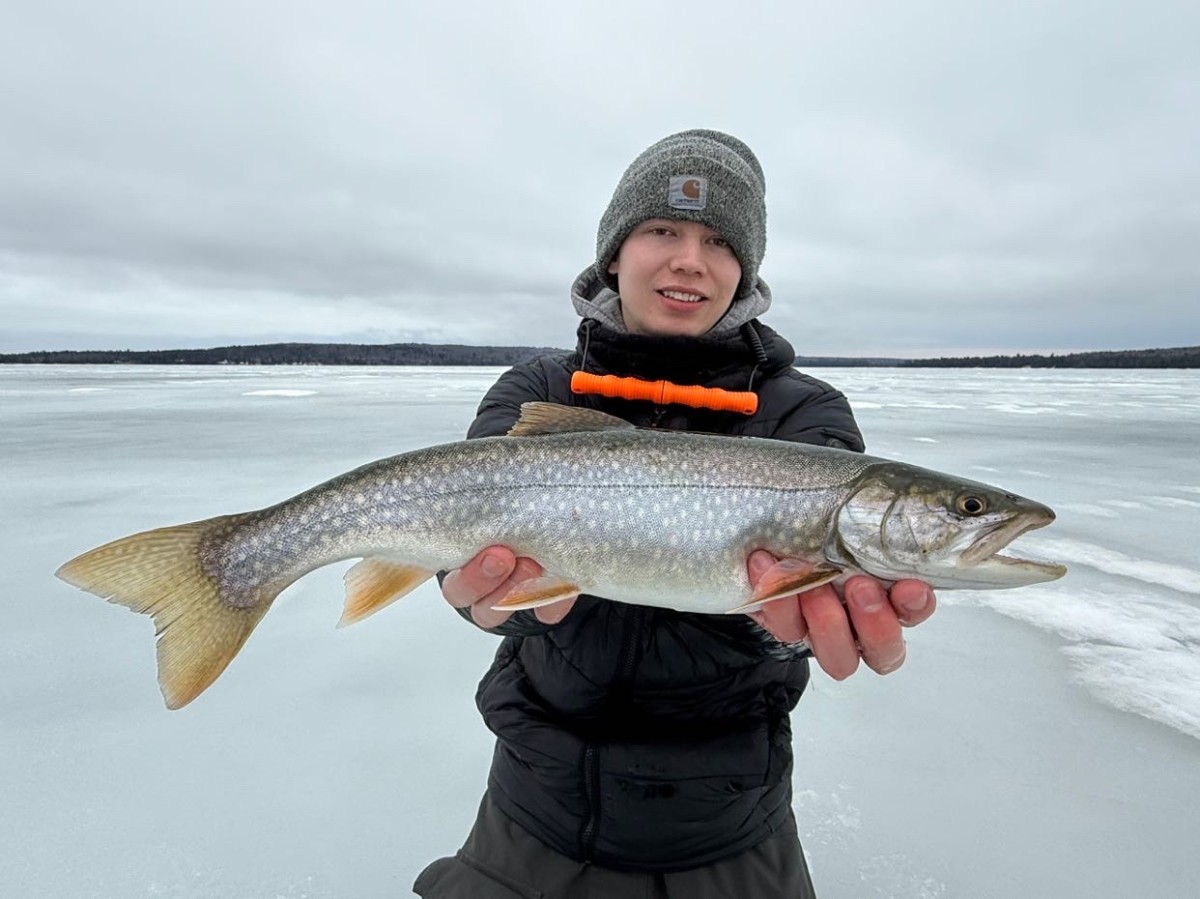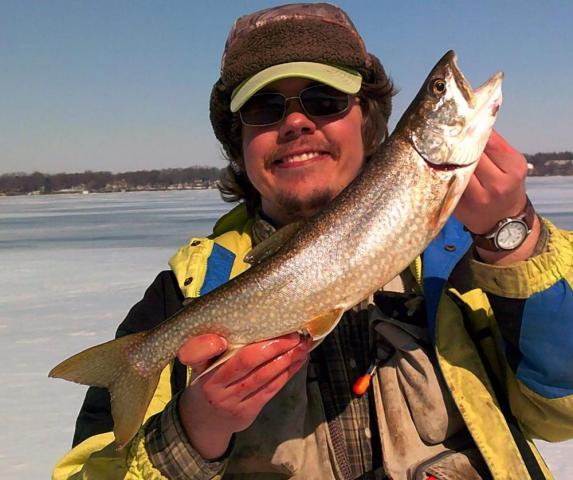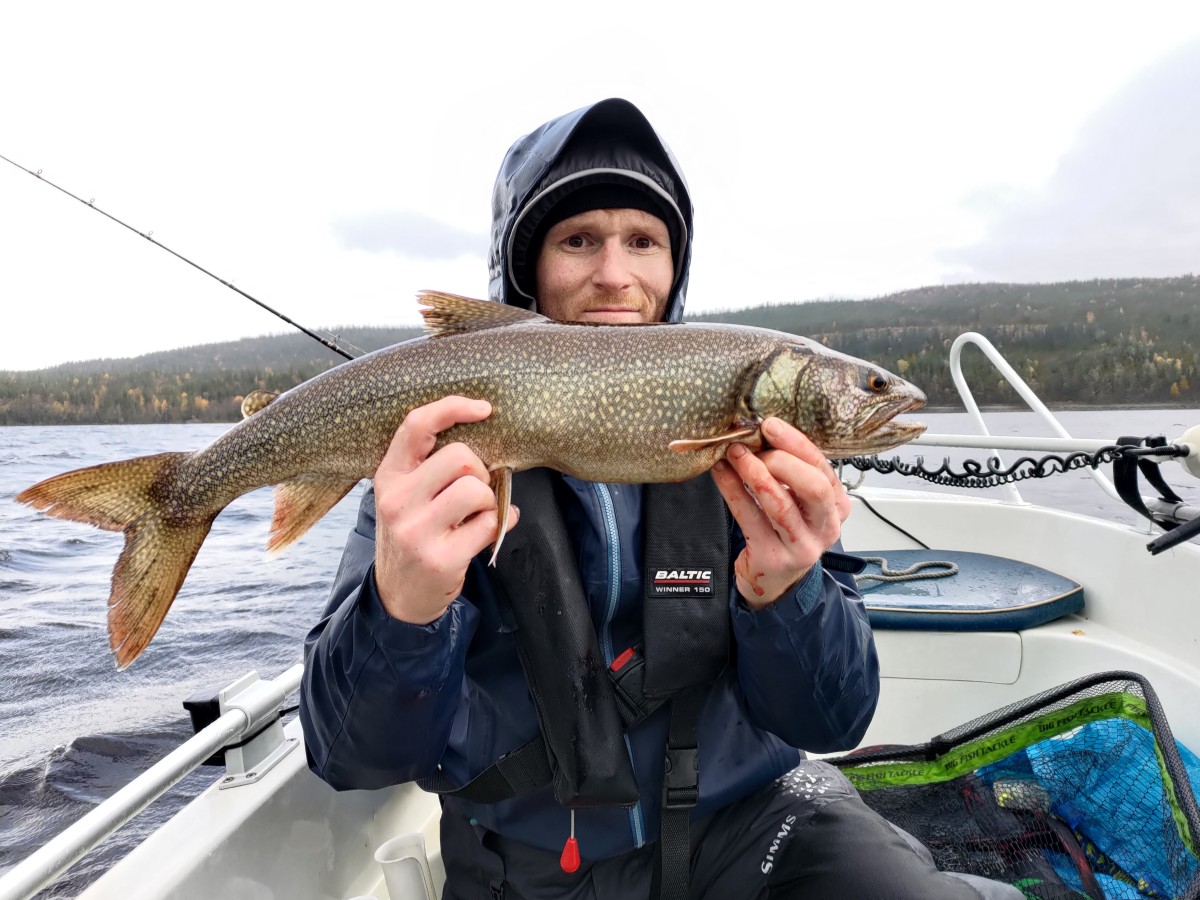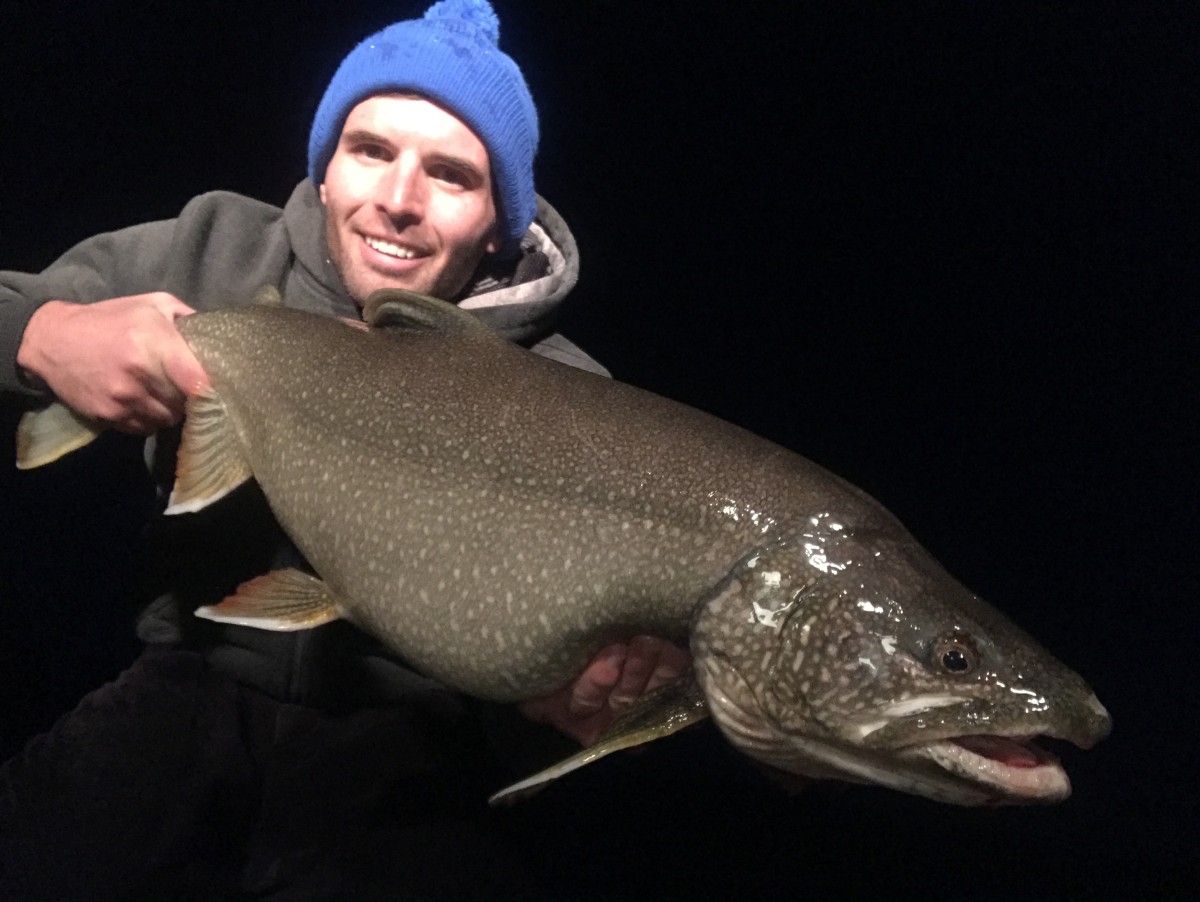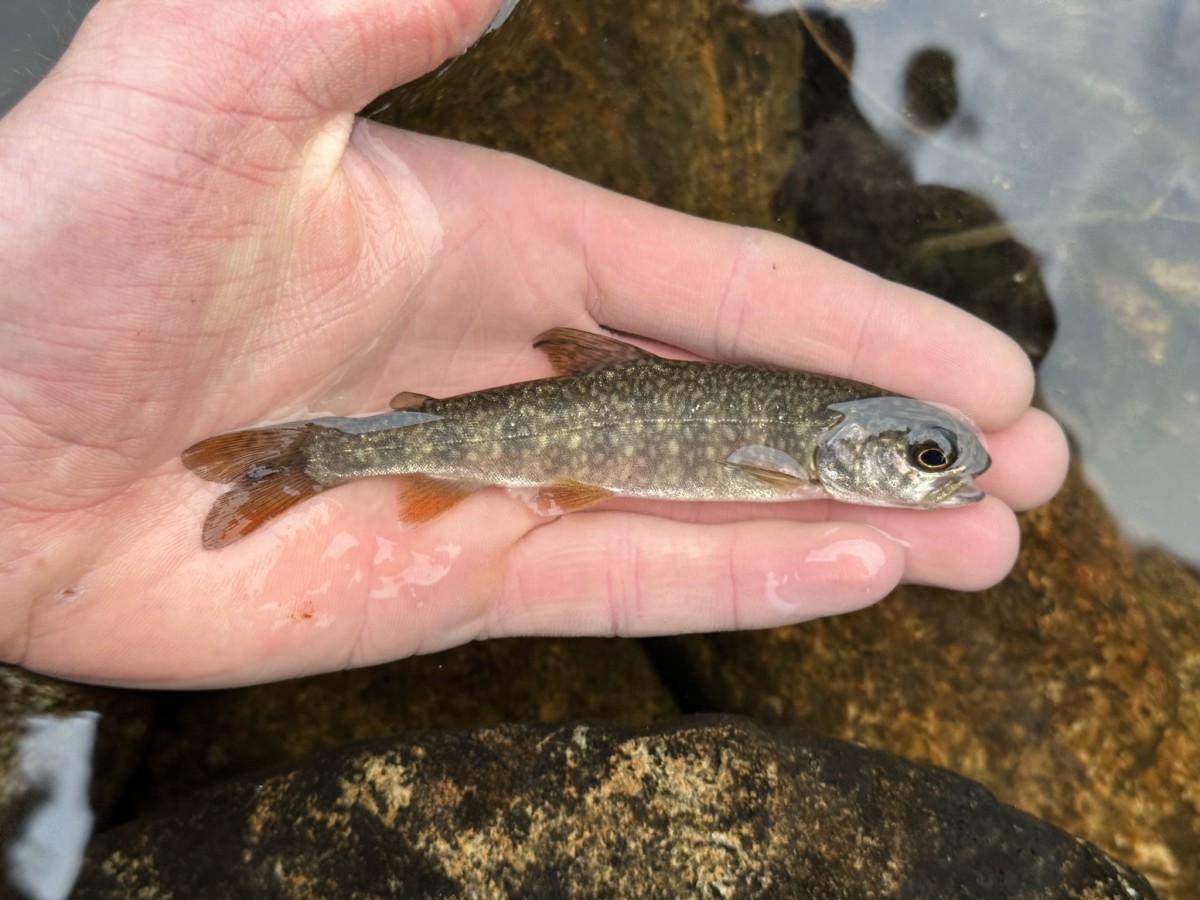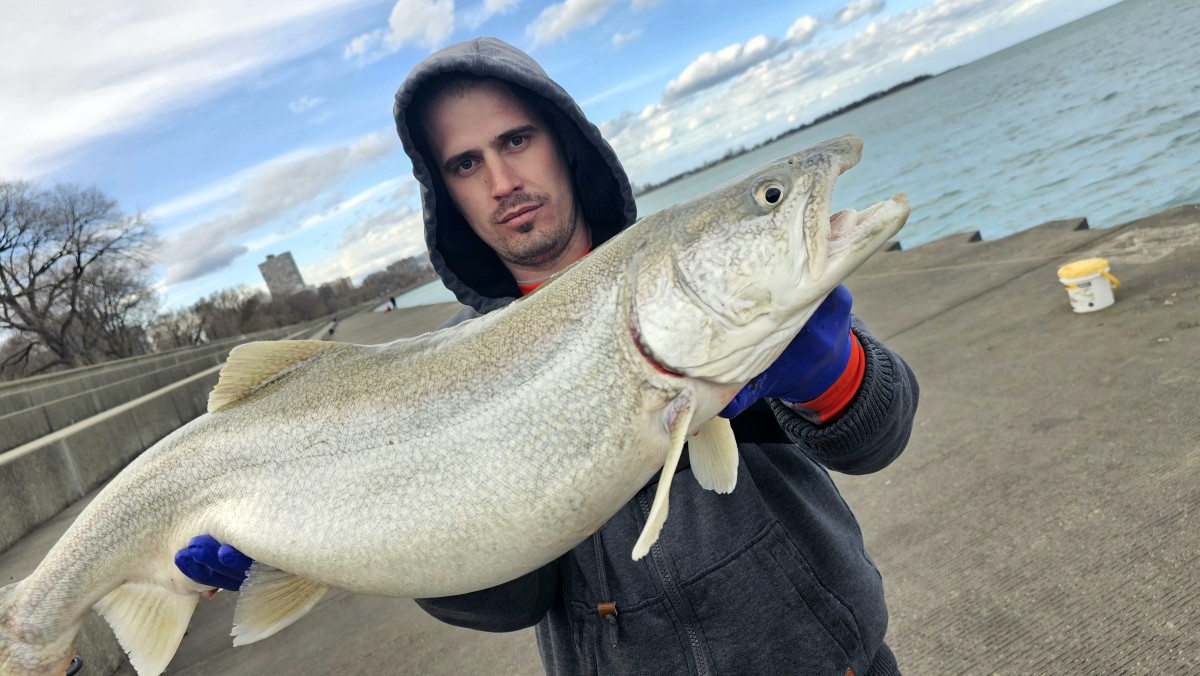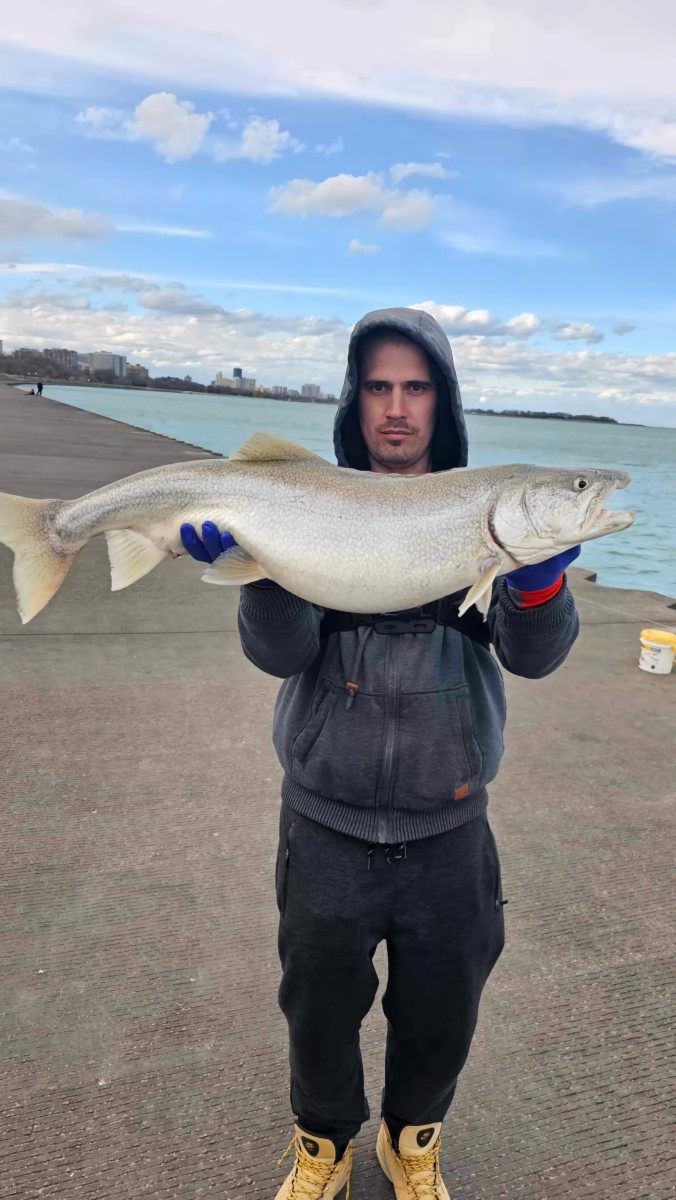Lake trout
(Salvelinus namaycush)
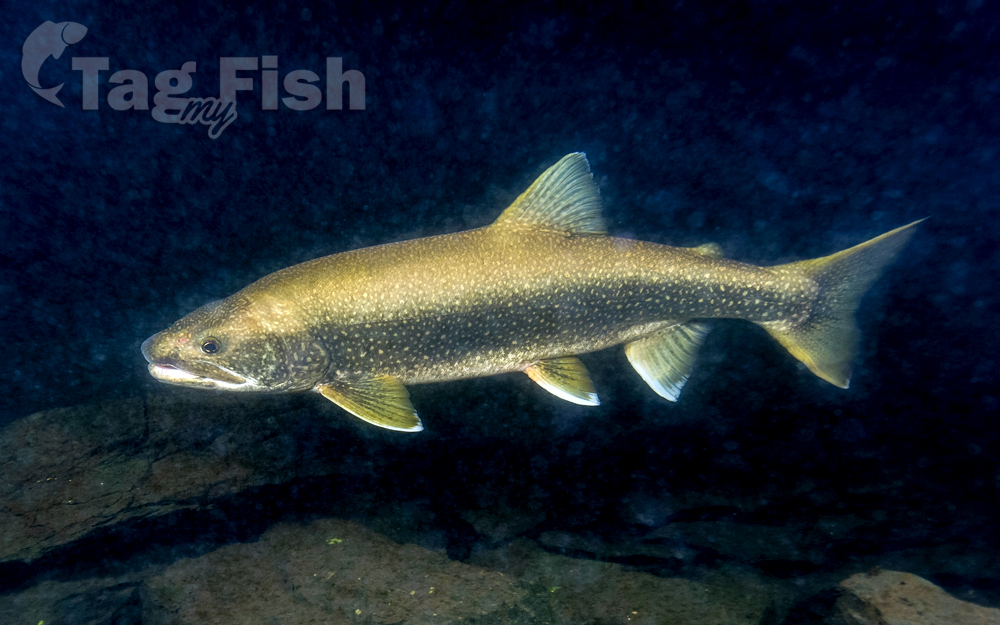
Classification
General data
The lake trout (Salvelinus namaycush) is a big freshwater char living mainly in lakes in northern North America. Other names for it include mackinaw, namaycush, lake char (or charr), touladi, togue, and grey trout. In Lake Superior, it can also be variously known as siscowet, paperbelly and lean. The lake trout is prized both as a game fish and as a food fish. Those caught with dark coloration may be called mud hens.
Range
From a zoogeographical perspective, lake trout have a relatively narrow distribution. They are native only to the northern parts of North America, principally Canada, but also Alaska and, to some extent, the northeastern United States.
Lake trout have been widely introduced into non-native waters in North America and into many other parts of the world, mainly Europe, but also into South America and certain parts of Asia. Lake trout were illegally or accidentally introduced into Yellowstone Lake in the 1980s where they are now considered invasive.
Description
Lake trout are the largest of the chars; the record weighed almost 102 pounds (46 kg) (netted) with a length of 50 inches (130 cm), and 15–40-pound (6.8–18.1-kilogram) fish are not uncommon. The average length is 24–36 inches (61–91 centimeters). The largest caught on a rod and reel according to the IGFA was 72 pounds (33 kg), caught in Great Bear Lake in 1995 with a length of 59 inches (150 cm).
Lake trout inhabit cold, oxygen-rich waters. They are pelagic during the period of summer stratification in dimictic lakes, often living at depths of 20–60 m (66–197 ft).
The lake trout is a slow-growing fish, typical of oligotrophic waters. It is also very late to mature. Populations are extremely susceptible to overfishing. Many native lake trout populations have been severely damaged through the combined effects of hatchery stocking (planting) and over harvest. Another threat to lake trout is acidification, which can have long-term effects on their populations through both direct harm and reduced prey populations (e.g. Mysis relicta).
There are three subspecies of lake trout. There is the common lake trout (Salvelinus namaycush namaycush), the siscowet lake trout (Salvelinus namaycush siscowet), and the less common rush lake trout (Salvelinus namaycush huronicus). Some lakes do not have pelagic forage fish during the period of summer stratification. In these lakes, lake trout take on a life history known as planktivory. Lake trout in planktivorous populations are highly abundant, grow very slowly and mature at relatively small sizes. In those lakes that do contain deep-water forage, lake trout become piscivorous. Piscivorous lake trout grow much more quickly, mature at a larger size and are less abundant. Notwithstanding differences in abundance, the density of biomass of lake trout is fairly consistent in similar lakes, regardless of whether the lake trout populations they contain are planktivorous or piscivorous.
